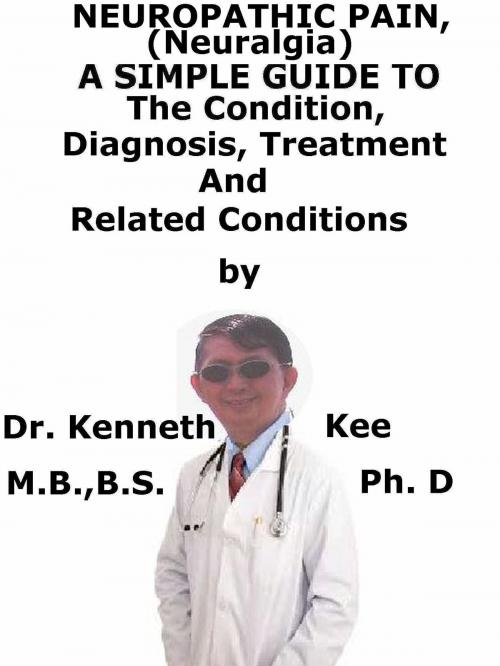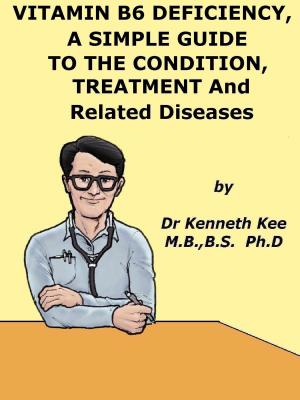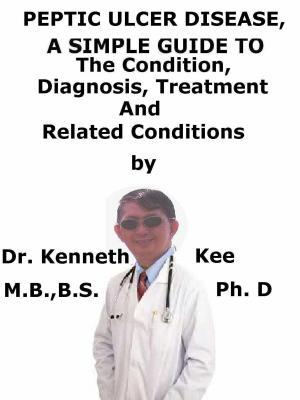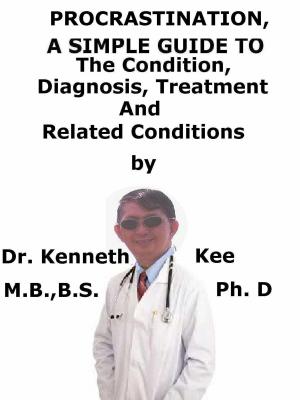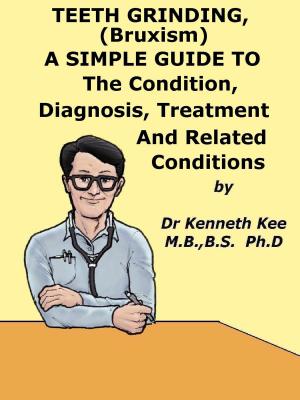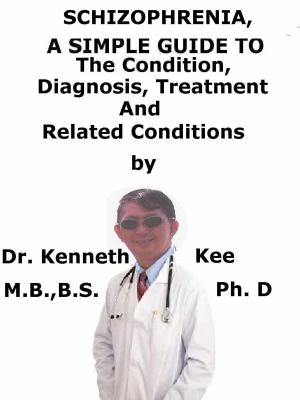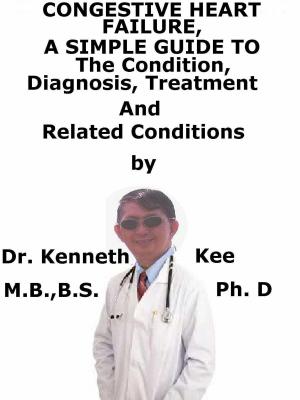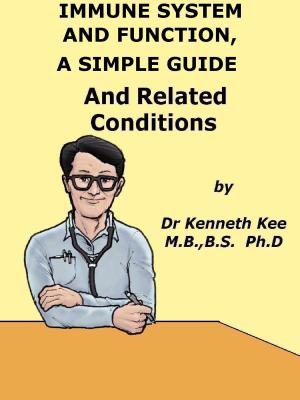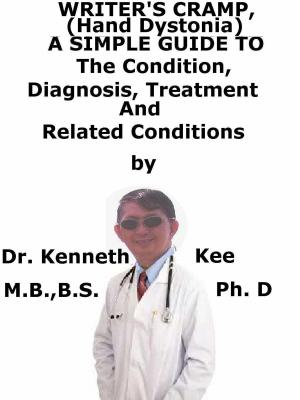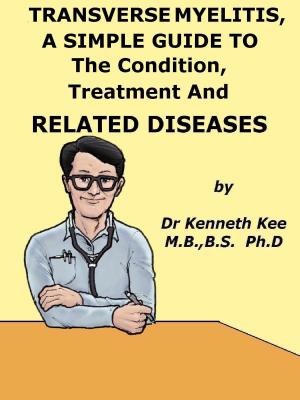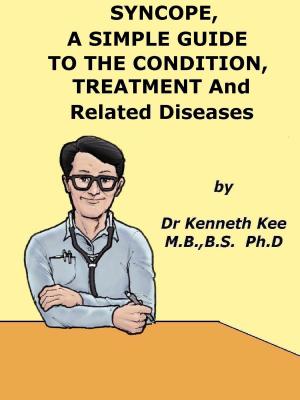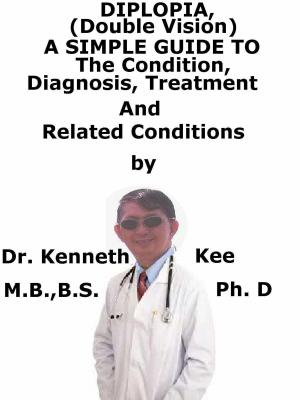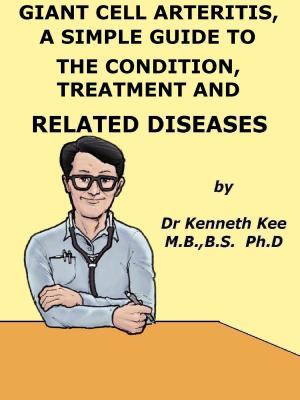Neuropathic Pain (Neuralgia), A Simple Guide To The Condition, Diagnosis, Treatment And Related Conditions
Nonfiction, Health & Well Being, Health, Ailments & Diseases, Nervous System & the Brain, Medical, Specialties, Internal Medicine, Neurology| Author: | Kenneth Kee | ISBN: | 9781370854479 |
| Publisher: | Kenneth Kee | Publication: | December 31, 2017 |
| Imprint: | Smashwords Edition | Language: | English |
| Author: | Kenneth Kee |
| ISBN: | 9781370854479 |
| Publisher: | Kenneth Kee |
| Publication: | December 31, 2017 |
| Imprint: | Smashwords Edition |
| Language: | English |
Neuropathic pain (neuralgia) is the medical symptom of sharp, shocking pain that follows the path of a nerve and is due to irritation or damage to the nerve.
Causes of Neuropathic pain
- Pressure on a nerve (intervertebral disc or injury)
- Nerve inflammation by herpes zoster virus (shingles or herpes zoster)
- Unknown cause (trigeminal neuralgia or idiopathic)
- Chemical irritation
- Chronic renal insufficiency
- Diabetes neuropathy
- Infections, such as HIV, Lyme disease, herpes zoster (shingles), and syphilis
- Medications such as cisplatin, paclitaxel, or vincristine
- Porphyria
- Pressure on nerves by nearby bones, ligaments, blood vessels, or tumors
- Trauma (including surgery)
In many cases, the cause is not known.
Post-herpetic neuralgia and trigeminal neuralgia are the two most frequent types of neuropathic pain.
A related but less frequent neuropathic pain involves the glossopharyngeal nerve, which gives feeling to the throat.
Neuropathic pain is more frequent in elderly people, but it may happen at any age.
Symptoms of Neuropathic pain
-
Raised sensitivity of the skin along the path of the damaged nerve, so that any touch or pressure is sensed as pain
-
Pain is along the course or distribution of a nerve.
Pain is normally very severe and is:
a. Constant and burning
b. Sharp or stabbing or lancinating
c. Irritating
d. Aching
e. Unpleasant
f. Lightning like
g. Perversion of other sensation such as tingling, needle pain
h. Very frequently described as unlike other pain
i. Happens in the same location
j. Becomes worse when the area is moved
k. Comes and goes (intermittent) -
It is frequently worse at night
-
It is frequently made worse by pressure on the nerve and sparked off by minimal stimuli such as light touch along the pathway of the nerve.
-
Weakness or complete paralysis of muscles provided by the same nerve
-
Sciatica
Sciatica is the pain in the back that radiates down the buttock and thigh down to the leg and foot frequently aggravated by sneezing or coughing.
Sitting on the painful side of the buttock worsens it.
Stooping or bending to get some objects also made it worse.
Walking aggravates the pain intensity.
Straight leg raising test is a definite positive sign for pain and confirms the sciatica. -
Herpes zoster
Herpes zoster or shingles can give rise to severe pain down one nerve.
It happens in link with blister like rashes along the path of the nerve.
It is normally frequent in the elderly and in people whose body resistance is low.
Because of the blister rashes, sometimes scarring happens over the skin rashes and there may be sensory loss.
The pain in the nerve is not involved by the sensory loss and can be so severe that some patients may attempt suicide.
Frequently the pain can continues for the rest of the patient's life. -
Trigeminal neuralgia
Trigeminal neuralgia is another pain which involves the fifth nerve in the face and may very severe.
I had one patient who could not stand the pain and had his nerve transected in order to obtain relief despite of the drooping of one side of the face after the surgery by an ENT surgeon.
Despite of the operation, the nerve grew back by itself and the pain returns three years later
I had to give injections of surgical spirit into the nerve before the pain finally stopped
The pain is typically severe enough for the doctor to prescribe painkillers and special drugs like tegretol or gabapentin which decrease the inflammation of the nerve
For some people the slightest touch or contact with clothing can produce unbearable pain
Diagnosis:
Trigger points for pain
MRI of the skull and spine
Nerve conduction
Treatment:
Painkillers
Anti-convulsant e.g tegretol
Antidepressant
Injection anesthetic
Surgery dividing nerve
TABLE OF CONTENT
Introduction
Chapter 1 Neuropathic Pain
Chapter 2 Causes
Chapter 3 Symptoms
Chapter 4 Diagnosis
Chapter 5 Treatment
Chapter 6 Prognosis
Chapter 7 NP Clinical Syndromes
Chapter 8 Intercostal Neuralgia
Epilogue
Neuropathic pain (neuralgia) is the medical symptom of sharp, shocking pain that follows the path of a nerve and is due to irritation or damage to the nerve.
Causes of Neuropathic pain
- Pressure on a nerve (intervertebral disc or injury)
- Nerve inflammation by herpes zoster virus (shingles or herpes zoster)
- Unknown cause (trigeminal neuralgia or idiopathic)
- Chemical irritation
- Chronic renal insufficiency
- Diabetes neuropathy
- Infections, such as HIV, Lyme disease, herpes zoster (shingles), and syphilis
- Medications such as cisplatin, paclitaxel, or vincristine
- Porphyria
- Pressure on nerves by nearby bones, ligaments, blood vessels, or tumors
- Trauma (including surgery)
In many cases, the cause is not known.
Post-herpetic neuralgia and trigeminal neuralgia are the two most frequent types of neuropathic pain.
A related but less frequent neuropathic pain involves the glossopharyngeal nerve, which gives feeling to the throat.
Neuropathic pain is more frequent in elderly people, but it may happen at any age.
Symptoms of Neuropathic pain
-
Raised sensitivity of the skin along the path of the damaged nerve, so that any touch or pressure is sensed as pain
-
Pain is along the course or distribution of a nerve.
Pain is normally very severe and is:
a. Constant and burning
b. Sharp or stabbing or lancinating
c. Irritating
d. Aching
e. Unpleasant
f. Lightning like
g. Perversion of other sensation such as tingling, needle pain
h. Very frequently described as unlike other pain
i. Happens in the same location
j. Becomes worse when the area is moved
k. Comes and goes (intermittent) -
It is frequently worse at night
-
It is frequently made worse by pressure on the nerve and sparked off by minimal stimuli such as light touch along the pathway of the nerve.
-
Weakness or complete paralysis of muscles provided by the same nerve
-
Sciatica
Sciatica is the pain in the back that radiates down the buttock and thigh down to the leg and foot frequently aggravated by sneezing or coughing.
Sitting on the painful side of the buttock worsens it.
Stooping or bending to get some objects also made it worse.
Walking aggravates the pain intensity.
Straight leg raising test is a definite positive sign for pain and confirms the sciatica. -
Herpes zoster
Herpes zoster or shingles can give rise to severe pain down one nerve.
It happens in link with blister like rashes along the path of the nerve.
It is normally frequent in the elderly and in people whose body resistance is low.
Because of the blister rashes, sometimes scarring happens over the skin rashes and there may be sensory loss.
The pain in the nerve is not involved by the sensory loss and can be so severe that some patients may attempt suicide.
Frequently the pain can continues for the rest of the patient's life. -
Trigeminal neuralgia
Trigeminal neuralgia is another pain which involves the fifth nerve in the face and may very severe.
I had one patient who could not stand the pain and had his nerve transected in order to obtain relief despite of the drooping of one side of the face after the surgery by an ENT surgeon.
Despite of the operation, the nerve grew back by itself and the pain returns three years later
I had to give injections of surgical spirit into the nerve before the pain finally stopped
The pain is typically severe enough for the doctor to prescribe painkillers and special drugs like tegretol or gabapentin which decrease the inflammation of the nerve
For some people the slightest touch or contact with clothing can produce unbearable pain
Diagnosis:
Trigger points for pain
MRI of the skull and spine
Nerve conduction
Treatment:
Painkillers
Anti-convulsant e.g tegretol
Antidepressant
Injection anesthetic
Surgery dividing nerve
TABLE OF CONTENT
Introduction
Chapter 1 Neuropathic Pain
Chapter 2 Causes
Chapter 3 Symptoms
Chapter 4 Diagnosis
Chapter 5 Treatment
Chapter 6 Prognosis
Chapter 7 NP Clinical Syndromes
Chapter 8 Intercostal Neuralgia
Epilogue
